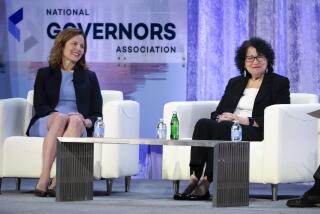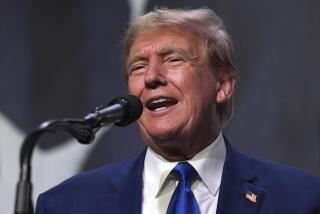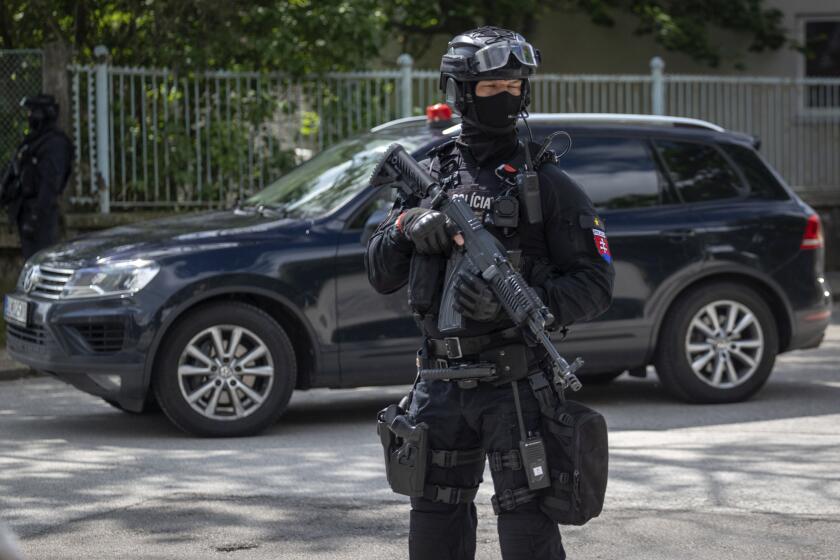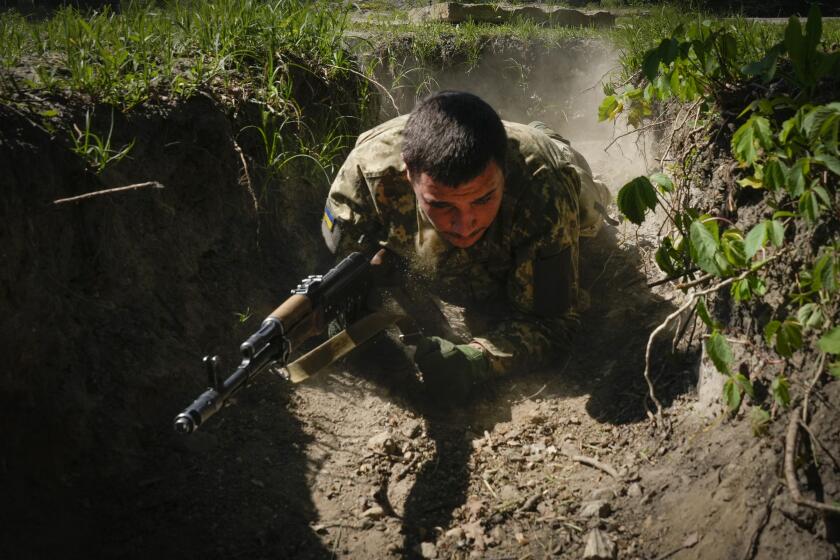Dalai Lama, Taiwan Leaders Meet Despite China’s Anger
The Dalai Lama wrapped up a historic trip to Taiwan on Thursday after six days of religion and politics, plus prayers for the souls of local pigs.
The visit earned the exiled Tibetan spiritual leader and his Taiwanese hosts almost daily lashings from China, alarmed by the high-profile meeting between representatives of its two most independence-minded provinces.
“The Dalai Lama has for a long time been engaged around the world in activities to split the motherland or disrupt ethnic unity,” Chinese Foreign Ministry spokesman Cui Tiankai said Thursday in Beijing. “This time he has run to Taiwan, apparently bringing along his political goals.”
Wary of Beijing’s anger but not cowed, the Dalai Lama and Taiwanese President Lee Teng-hui went ahead with a long-awaited meeting Thursday, but in deference to China they met in a government guest house rather than in the nearby presidential palace.
While both took pains to play down the political content of the visit--touted as purely religious--the two leaders appeared to have become less worried about any repercussions from Beijing.
Their meeting was described as improbable at the beginning of the week, when Taiwanese officials categorically ruled out any talks with Taiwanese Premier Lien Chan and the head of the pro-independence Democratic Progressive Party, Hsu Hsin-liang.
But by Thursday the Tibetan leader had met all three, in addition to accepting $500,000 in donations from Buddhist followers and a 60-pound crystal statue of himself, a gift from Lee.
In talks with Lien, the Buddhist leader joked about the regular fistfights and water fights in Taiwan’s parliament, calling them “OK,” and praised Taiwan for its smooth transition from dictatorship under Chiang Kai-shek to democracy.
“I very much admire Taiwan’s complete democratization,” he told Lien.
The Dalai Lama’s arrival Saturday flung him straight into an uneasy marriage of politics and religion, with hundreds of placard-bearing political activists waiting for him as he stepped out of the airport in the southern city of Kaohsiung en route to a large Buddhist center nearby.
The activists shouted and surged toward each other as they either praised the Tibetan leader for his peaceful struggle for Tibetan autonomy or charged him with wanting to divide China.
But throughout his visit, appearing more like a visiting statesman than a religious leader, the smiling monk showed himself to be a master of adaptation, moving smoothly from lofty religious teachings to calls for people to unite in prayer for the reincarnation of millions of pigs that Taiwanese farmers are having to slaughter to stop a nationwide epidemic of foot-and-mouth disease.
“I hope everybody can get together and pray for their samsara [transmigration of souls],” he said.
His appearances attracted huge crowds, and his lectures to a country with 9 million Buddhists were closely followed. An estimated 100,000 people from 10 faiths poured into stadiums across the island to hear him speak from atop a $40,000 golden filigree chair padded with brocade cushions.
The Dalai Lama fled Tibet for India in 1959 after an unsuccessful uprising against Chinese troops who had invaded eight years earlier. China maintains that Tibet and Taiwan have been part of its territory for centuries and says Lee and the Dalai Lama are covertly plotting to fragment China.
Both men deny seeking independence from China, although Lee has said that Taiwan, which split from the mainland in 1949, must administer itself independently until China embraces democracy. China broke off talks with the Dalai Lama in 1993.
The Dalai Lama has said he is not seeking independence for Tibet but a measure of autonomy that would allow Tibetans self-rule in all matters except foreign affairs and defense.
More to Read
Start your day right
Sign up for Essential California for news, features and recommendations from the L.A. Times and beyond in your inbox six days a week.
You may occasionally receive promotional content from the Los Angeles Times.






